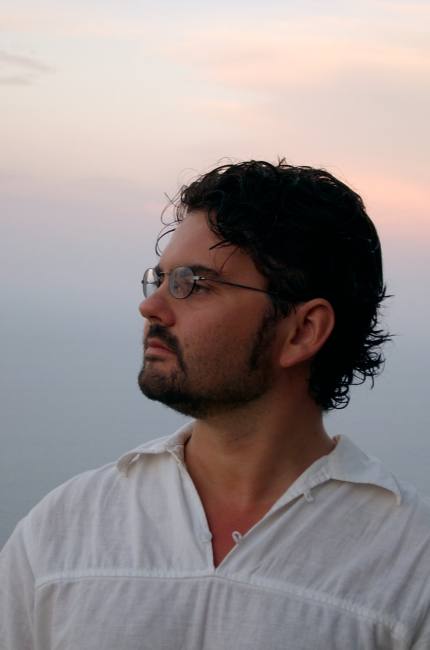Italian Open Source developers: Luca Passani
During the Cocoon GetTogether recently held in Rome, I met Luca Passani, an Italian software engineer experienced in Web and Mobile Internet development, known to the open source community for creating WURFL.
Luca, who spent seven years with Openwave Systems, currently works for AdMob, the world’s largest mobile advertising marketplace. Yesterday I invited Luca – who lives really close by – to have a tea at my house, and I took the chance to pose him some questions about WURFL.
 Luca Passani
Luca Passani
How it all started?
In 1999 I was involved in a project for Telenor in Norway. They wanted to launch the first European wap portal. The first two devices to hit the market at that stage were: then nokia 7110 – aka the big banana (“bananoneâ€)- and the siemens C35. They had a very different wap browser: fixing usability with one implied screwing it up the other one. That was the beginning of the so-called “device fragmentation†(known also as device diversity).That’s when I started wondering how I could solve the problem. And that’s when phone.com (now openwave) asked me to join them.
Since then, how did you manage to get such large adoption for WURFL?
In hindsight it wasn’t that difficult, because there was a big gap to be filled, and nobody to fill it. It was like if the big Architect of the Mobile Industry had forgotten the roof! The huge problem of device fragmentation was stopping the industry from taking off, and nobody was providing a solution. This was the contest in which WURFL was born, and around which companies found home. Small companies in the beginning, those which could not afford to pay big bucks for a commercial-grade solutions. I was already running a 3000-developer strong mailing list at the time (called WMLProgramming) when WURFL was born. The list provided the ideas, the encouragement and the support to make WURFL a reality in a matter of months. More than that, the mailing list also represented an excellent marketing channel directly into the IT departments of mobile companies. WURFL’s strength was the grass root interest and support.
It is obvious that we got a bunch of stuff right. After a few years, also average-sized companies were using WURFL, and after them, even big guys such as Google and Yahoo Mobile had made WURFL part of their regular device information diet.
WURFL started almost by scratching a developer’s personal itch. Luca’s activity was sponsored by Openwave to empower developers and eventually leveraging the emerging mobile market.
So, how important was the community to make it happen?
WURFL “is†the community. Developers, the silent constituency of the mobile web, had been totally neglected. They found the strength to come together and fix their own problems: creating WURFL and keep it in good shape. My role was simply being the catalyst for this reaction. I created the WURFL schema, I put my understanding of the problem domain to the service of the project. To add to that, I created the WURFL website, I managed the mailing-list, I created the Java WURFL API and, last but not least, I created WALL (a tool to multi-serve multiple markups to different devices classes). Albeit Andrea Trasatti has now left the project, his contribution for many years deserves acknowledgment.
Luca is a “benevolent dictator” placing community before code. He shared the project’s leadership with the co-mantainer Andrea Trasatti for few years, taking in great account the importance of contributors. Small contributions, or “micro-contributions” as I would call them from now on, are the key to WURFL success.
What about the competition, is WURFL the only platform?
Not, it isn’t it. Albeit there is virtually no competition in the open source space. The situation is different with commercial entities: Volantis, MobileAware and ArgoGroup are the commercial counterparts in this space. Despite those products are backed by commercial entities and come with a lof of nice features, (not to mention commercial support), WURFL has unique advantages which are the direct consequence of the adoption of an Open Source model. Commercial solution are typically expensive, too expensive for small- and medium-sized companies in the mobile space. The reason for the high price lies in the need for commercial vendors to build a repository of device information. One needs trained staff to run device tests (a time consuming activity), and labs in different continents, devices cost 100 to 500 euros to acquire. It should come as no surprise that such costs are reflected in the cost of the product. With WURFL the situation is different. While WURFL can afford no paid staff to run tests, its community provides the open Device Description Repository with a steady flow of device information from its adopters and supporters. One could present WURFL as a piggy bank in which one puts one euro and gets back one million. No wonder people think this is a great deal.
On top of that, comes the fact that WURFL is totally open and WURFL adopters can hack the hell out of the framework and make it do exactly what they need. Hardly a possibility with commercial solutions.
I agree with Luca, a proprietary solution has to run after the sun to get it updated, but they could still try to imitate Funambol approach replicating the Phone Sniper program. So said, I also worked for telco operators for years, and I believe that the openness is needed when you want to include and extend technologies.

Reply